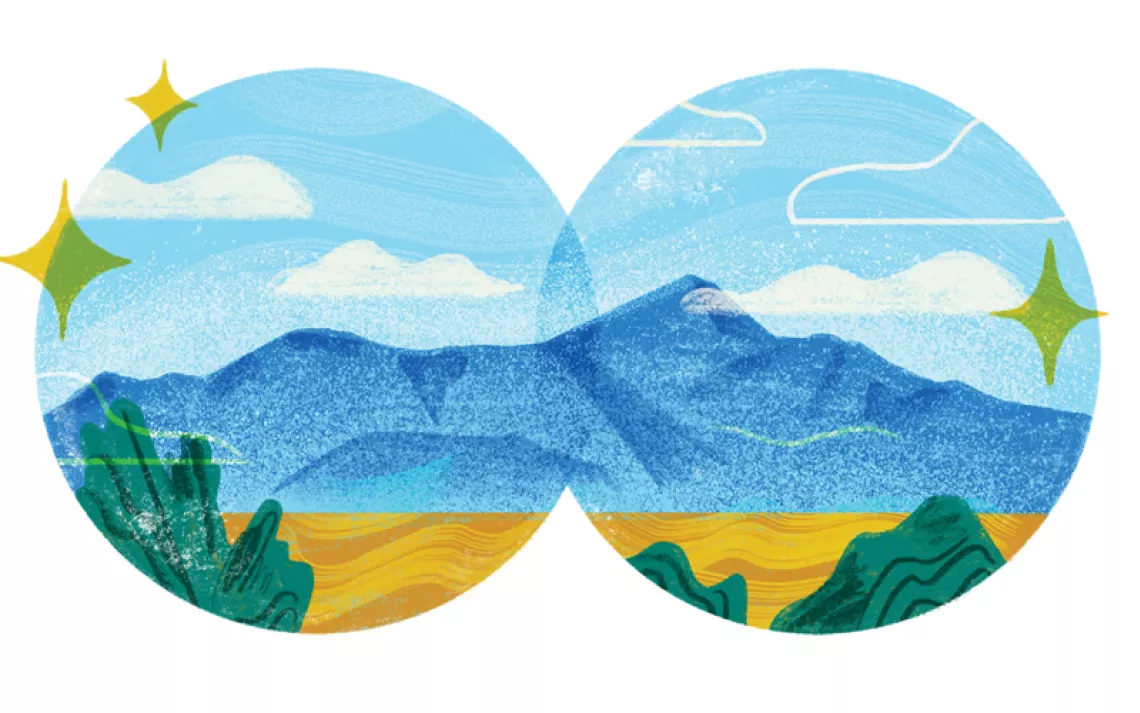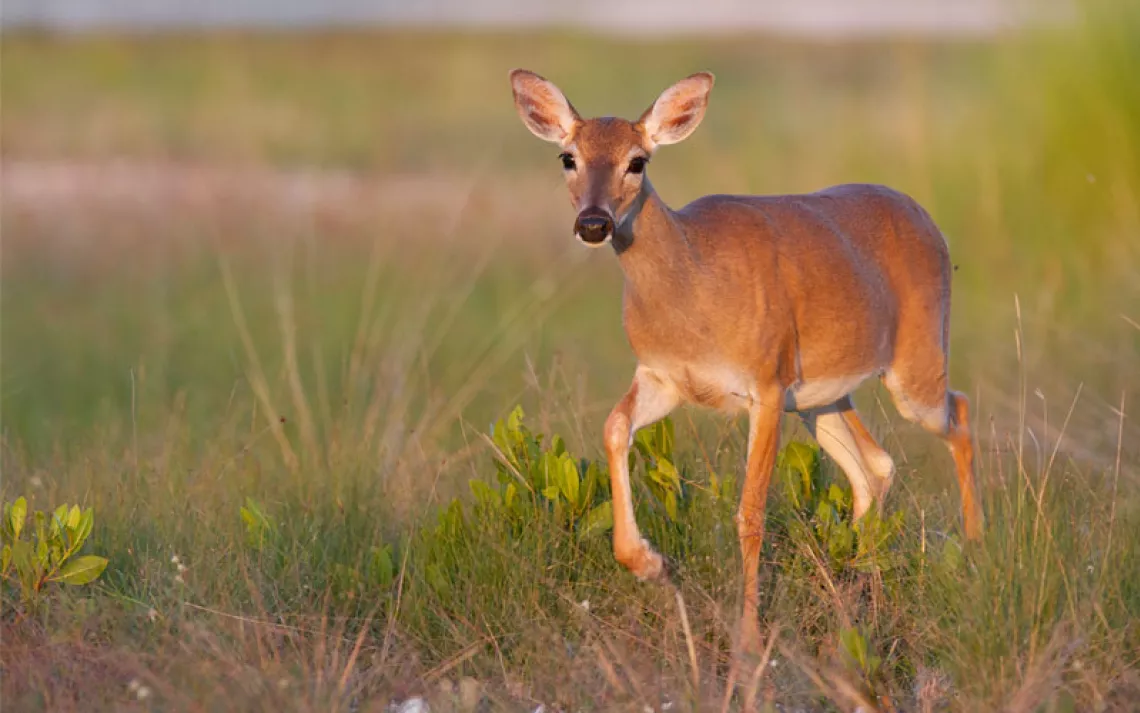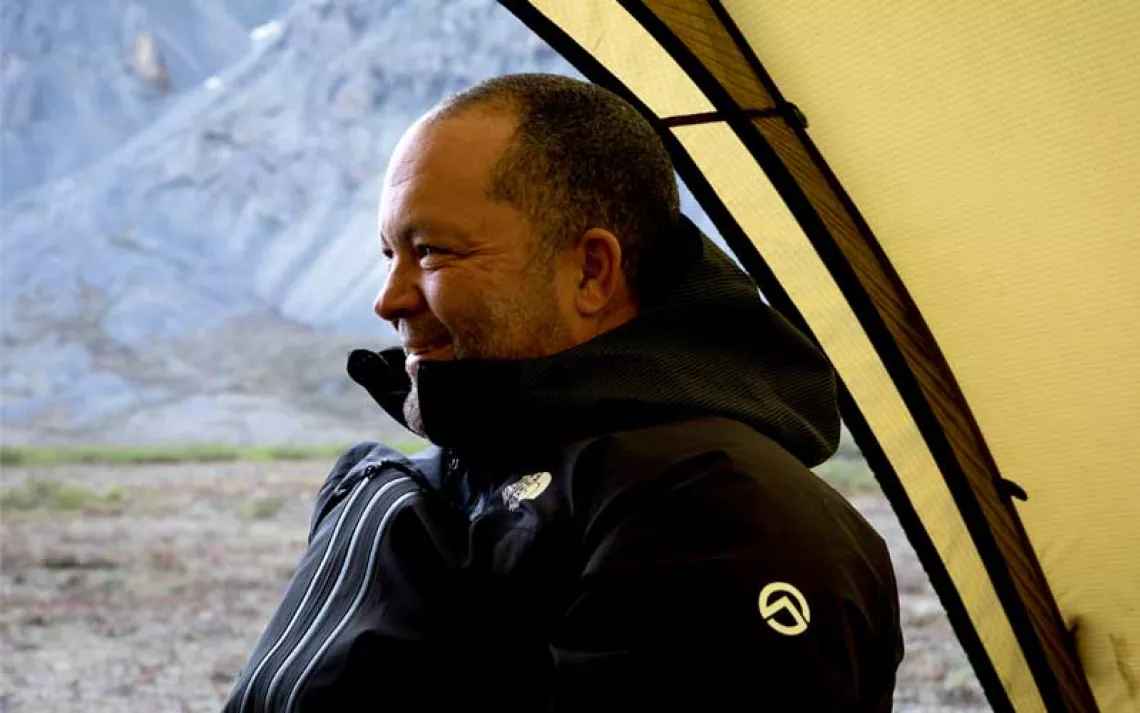Share and Share Alike
To preserve Earth's wild beauty, we need to both spare land and share land, says Sierra's editor in chief

Cartoon by Joel Pett
In 1975, there were a scant 136 grizzly bears in the Greater Yellowstone Ecosystem, the vast complex of wildlands surrounding the world's first national park. It was a worrisome nadir for the fearsome species, which had numbered about 50,000 when Europeans arrived in North America. In response, federal officials listed the grizzly as threatened under the Endangered Species Act. Wildlife managers swapped their rifles for radio collars; instead of putting the bears down, they started to move them around, relocating the animals to the best available habitat and, when possible, keeping them away from people. It worked. Today there are more than 700 grizzlies in the Greater Yellowstone Ecosystem, out of an estimated 1,800 total in the Lower 48.
As the grizzlies' numbers have expanded, so has their range. In the Northern Rockies today, bears and people are increasingly in close contact. This has as much to do with our population growth as it does with the bears'. Between 1970 and 2010, the number of human homes in the Yellowstone region tripled.

Sign up to receive Sierra News & Views
Get articles like this one sent directly to your inbox weekly.
With this action you affirm you want to receive Sierra Club communications and may vote on policy designated by the Sierra Club Board.
We humans sprinkled ourselves through the woods, grizzlies moved onto the plains, and interspecies conflict intensified. As Aaron Teasdale reports in "Grizzly Bears Are Making a Comeback," bear biologists are busy trying to convince homeowners, farmers, and ranchers to lock down their pet food, secure their garbage, and put their flocks and herds behind electric fences. "I don't have a bear problem," one biologist told Teasdale. "I have a people problem."
The grizzly-human tensions are emblematic of the precarious balance between the interests of human civilization and the instincts of other species. With our outsize global population (7.5 billion and climbing) and our oversize footprint, we crowd out the rest of life. In the last 20 years, an estimated 10 percent of global wilderness disappeared.
What is to be done? The eminent biologist Edward O. Wilson has a big idea: Set aside 50 percent of Earth for preserving biodiversity. "Only by committing half of the planet's surface to nature can we hope to save the immensity of life-forms that compose it," Wilson writes in his latest book, Half-Earth, which we have excerpted.
In all honesty, Wilson's vision isn't an exacting policy prescription. The Half-Earth proposal is more like a Hail Mary pass—and it's just what we need. To check the global extinction crisis requires that civilization at once spare land and share land. Sparing means keeping lands and waters relatively free from human domination (though not necessarily human presence; indigenous cultures have shown themselves to be expert stewards). At the same time, we have to do a better job of sharing space. We should extend to other critters the same common courtesies we'd afford to any neighbor: patience, generosity, and a willingness to compromise. Even when, or especially when, that neighbor is a hungry bear.
 The Magazine of The Sierra Club
The Magazine of The Sierra Club



